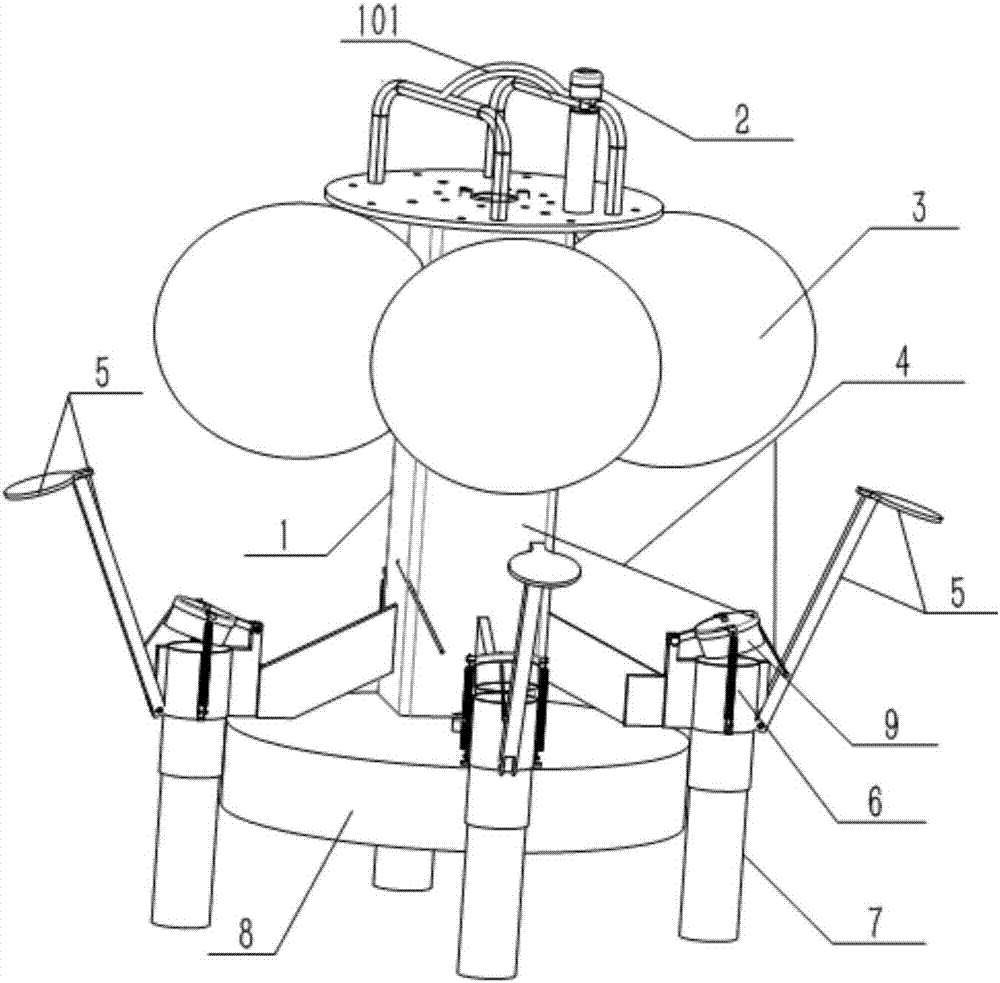Myriametre-scale deep sea autonomous bottom sediment detecting and obtaining device
An autonomous, deep-sea technology, applied in the direction of sampling devices, measuring devices, satellite radio beacon positioning systems, etc., can solve the problems of easy leakage in the recycling process, low quality of collected samples, unsuccessful sampling, etc., and achieve the solution of sealing and durability The effect of suppressing technical difficulties, increasing the scope of work, and saving deployment time
- Summary
- Abstract
- Description
- Claims
- Application Information
AI Technical Summary
Problems solved by technology
Method used
Image
Examples
Embodiment Construction
[0033] The present invention will be further described below in conjunction with the accompanying drawings and embodiments.
[0034] Such as figure 1 and figure 2 As shown, the 10,000-meter-level deep-sea autonomous bottom exploration device described in the present invention includes a main body support module, an autonomous acoustic release module, a sample adoption module, a load throwing and counterweight module, a recovery and positioning module, a floating module, a power supply and a control module. Module 11. The main body supporting module includes a main body frame 1 , the sample adopting module includes a sampling cavity 7 , the autonomous acoustic release module includes an acoustic releaser 10 , and the throwing weight module includes a throwing weight 8 .
[0035] The main frame is welded and assembled with 316L stainless steel, and there are multiple external hanging points, which can realize the rapid assembly of different modules, and can also realize the m...
PUM
 Login to View More
Login to View More Abstract
Description
Claims
Application Information
 Login to View More
Login to View More - R&D
- Intellectual Property
- Life Sciences
- Materials
- Tech Scout
- Unparalleled Data Quality
- Higher Quality Content
- 60% Fewer Hallucinations
Browse by: Latest US Patents, China's latest patents, Technical Efficacy Thesaurus, Application Domain, Technology Topic, Popular Technical Reports.
© 2025 PatSnap. All rights reserved.Legal|Privacy policy|Modern Slavery Act Transparency Statement|Sitemap|About US| Contact US: help@patsnap.com



